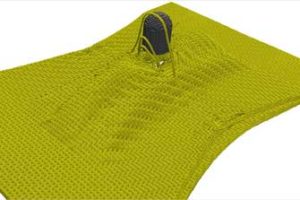office of naval research
Elemental ‘cookbook’ guides efficient thermoelectric combinations
A repository developed by Duke University engineers that they call a “materials genome” will allow scientists to stop using trail-and-error methods for combining electricity-producing materials called “thermoelectrics.”
Thermoelectri…
New conductivity technique could cool computer chips, lasers
The surprising discovery of a new way to tune and enhance thermal conductivity — a basic property generally considered to be fixed for a given material — gives engineers a new tool for managing thermal effects in smart phones and computers, laser…
Cement, the glue that holds oyster families together
Oyster reefs are on the decline, with over-harvesting and pollution reducing some stocks as much as 98 percent over the last two centuries.
With a growing awareness of oysters’ critical roles filtering water, preventing erosion, guarding coasts …
A different kind of spin cycle
We’re used to hearing about spin-offs, but what about spin-outs and spin-ins? Naval laboratories get scores of patents every year. What do you do with all that intellectual property? Ideally, and as long as the technology isn’t sensitive, you’d like to spin it out to other users, including commercial industry. As part of the Department of the Navy’s continuing efforts to streamline its business practices, the Office of Naval Research’s Commercial Technology Transition Officer has conducted a technology transition “wargame” in Potomac, Maryland. Participants from government, industry, and academia focused on “Spin-Out”: transferring Naval technologies from the Department of the Navy to other agencies and the commercial sector.
Navy funds cooler running semiconductors
Under an Office of Naval Research basic research effort, researchers at Advanced Technology Materials Inc. have grown thin layer silicon from isotopically purified silane gas (Si28H4). The result is a semiconductor that at room temperature conducts electricity about 30 percent better than traditional silicon. That’s important because by increasing thermal conductivity devices and circuits can be driven with a higher current?speed before they start to burn out.
Take your stinking calipers off me, you damn dirty drone!
 Wired.com carries a gee-whiz tale from the Office of Naval Research on development of an army of drones that would fight the battles of tomorrow. It all sounds very Star Wars — and expensive. But the notion is that human commanders at the top would provide goals that a network of unmanned but highly-networked machines would work to achieve. That could be taking a hill in a combat zone, capturing a known enemy, or helping rescue disaster victims. One wonders who such an army would fight (the Chinese army of 2020? A resurgent Russia?) But maybe this will be one of those ideas that die on the vine in the armed services but find a robust future in the private sector. The original technology, after all, came from drones built to track migrating whales.
Wired.com carries a gee-whiz tale from the Office of Naval Research on development of an army of drones that would fight the battles of tomorrow. It all sounds very Star Wars — and expensive. But the notion is that human commanders at the top would provide goals that a network of unmanned but highly-networked machines would work to achieve. That could be taking a hill in a combat zone, capturing a known enemy, or helping rescue disaster victims. One wonders who such an army would fight (the Chinese army of 2020? A resurgent Russia?) But maybe this will be one of those ideas that die on the vine in the armed services but find a robust future in the private sector. The original technology, after all, came from drones built to track migrating whales.





